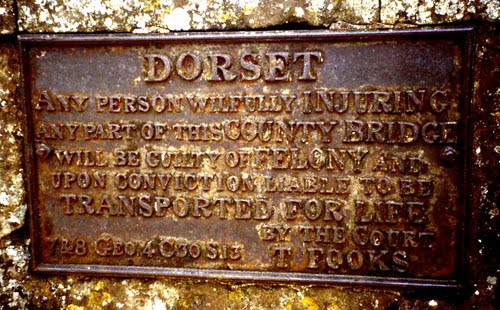Originally called the ‘cucking-stole’, this is one of the
most ancient modes of punishment in England. From Saxon times it was nothing more than a
‘stool of use’ upon which the offender sat and thus being exposed to public
derision, but in time the idea was extended to include immersion in water and
the various boroughs and manors were required by law to maintain their own
ducking stool. Normally associated with
female ‘common scolds’, it was also used for Butchers, Bakers, Brewers,
Apothecaries and the like who gave short measure or vended adulterated articles
of food. A fine example can be seen in
the Priory Church at Leominster in Herefordshire and was the last to be used in
England when, in 1809, a woman called Jenny Pipes alias Jane Corran, was
paraded through the town on the stool and then ducked in the river.
Poet Benjamin West
described the process in 1780 as follows:
‘ There stands, my friend, in yonder pool,
an engine called a Ducking Stool;
By legal power commanded down,
The joy and terror of the town,
If jarring females kindle strife,
Give language foul, or lug the coif;
If noisy dames should once begin
To drive the house with horrid din;
Away, you cry, you’ll grace the Stool;
We’ll teach you how to hold your tongue to rule.
Down in the deep the Stool descends,
But here, at first, we miss our ends;
She mounts again, and rages more
Than ever vixen did before.
If so, my friend, pray let her take
A second turn into the lake;
And, rather than your patient lose,
Thrice and again repeat the dose,
No brawling wives, no furious wenches,
No fire so hot, but
water quenches.’




No comments:
Post a Comment